Straight Gravity Roller Conveyor — a type of roller conveyor that remains one of the oldest tools for moving loads within a production facility. Despite its long history, it continues to be popular across various business sectors as a cost-effective and reliable production solution. The absence of a drive mechanism ensures simplicity in setup and operation, and significantly reduces the cost of the conveyor.
Thanks to the ability of a gravity roller conveyor to move loads not only horizontally but also at a slight upward incline (up to 7° for heavy loads and up to 12° for lighter ones), it can be effectively used to automate material handling operations within a warehouse or facility. This allows for the design of transport routes with virtually any geometry.
Fields of Application for Gravity Roller Conveyors
Gravity roller conveyors, just like powered ones, are used for transporting unit and containerized loads (such as boxes, crates, trays, pallets, kegs, sheet and profile metal, etc.) across various industries. These include logistics — in warehouses and transshipment points; manufacturing — as part of assembly lines or buffer zones; and sectors related to woodworking and metalworking — at cutting and shearing stations, among others.
Within conveyor systems, gravity roller conveyors are primarily used as accumulation sections, offering a cost-effective, low-maintenance solution for efficient load handling without the need for drive mechanisms
The application range of straight gravity roller conveyors is extremely broad: they are used in energy, mining, food processing, woodworking, construction, light industry, and many other sectors.
Configuration and Operating Principle of the Straight Gravity Roller Conveyor by VIMALSPETSBUD :
Depending on the nature of the load and operating conditions, gravity roller conveyors can be equipped with components and elements featuring various parameters suitable for a specific industry or field of application:
- frame of the straight gravity roller conveyor;
- rollers – the diameter and pitch of which depend on the nature of the load;
- sidewalls or guides – of various heights and designs;
- roller conveyor supports – stationary or mobile;
- possibility of a stopper at the end of the roller conveyor or deflector rollers;
- possibility of an integrated measuring ruler.
The load-bearing element of a gravity conveyor is the rollers, which are gravity-based and lack any powered components—hence the name "Gravity Non-Driven Roller Conveyor."
The roller axles are made of cold-rolled steel bars, either round or hexagonal, in accordance with standards. We offer five assembly methods for non-driven rollers.
| Mounting Method |
Image |
| Spring Axis: This allows for quick and easy assembly and disassembly of the rollers from the side of the conveyor or another structure. |
.png) |
| Axis with Internal Thread |
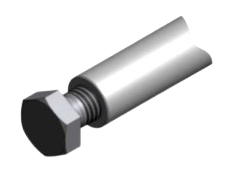 |
| Axis with External Thread |
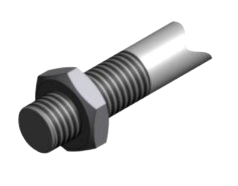 |
| Smooth Rollers with Fixed Shaft |
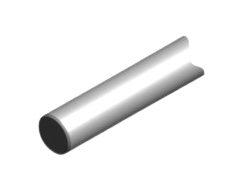 |
| Shaft with Machined End |
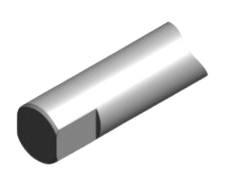 |
Non-bulk cargo on a non-powered roller conveyor is moved by its own weight with the help of an incline. To prevent the cargo from falling off, braking rollers are used. The movement along a straight trajectory occurs by pushing the cargo along the conveyor by the operators.
Depending on the cargo that moves inertly, non-powered rollers are made from different materials such as:
- steel;
- stainless steel;
- PVC (Polyvinyl Chloride);
- Steel coated with PVC or rubberized.
VIMALSPETSBUD designs and manufactures gravity-driven roller conveyors for enterprises that require conveyor equipment and seek to mechanize processes using roller conveyor systems..
The price of a conveyor depends on its configuration, operating conditions, mode of operation, and other factors. Therefore, the cost of roller conveyors of the same length can vary significantly, making it quite challenging to determine the price per meter of a roller conveyor.
A non-driven roller conveyor has the following characteristics that highlight its advantages as equipment:
- The design lacks complex components, making it quite reliable.
- The use of such equipment saves space in production and storage facilities..
- The use of special materials for the construction allows for the transportation of even hot loads and enables operation in aggressive environments.
- Using a non-driven conveyor significantly reduces transportation and storage costs.
- Using a gravity roller conveyor significantly speeds up the workflow.
- Purchasing a non-powered roller conveyor quickly pays off, and its operation generates profit.
You can either choose a non-powered roller conveyor on your own or contact our specialists, and they will be happy to help you select the appropriate roller conveyor.
We are located in Chernihiv and manufacture straight driven roller conveyors of any size to order, based on customer requirements, in the shortest possible time and at attractive prices. You can purchase straight driven roller conveyors produced by VIMALSPETSBUD by submitting an online application or contacting us by phone. (Go to contacts)
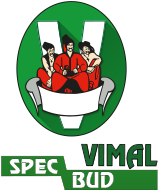
.png)



